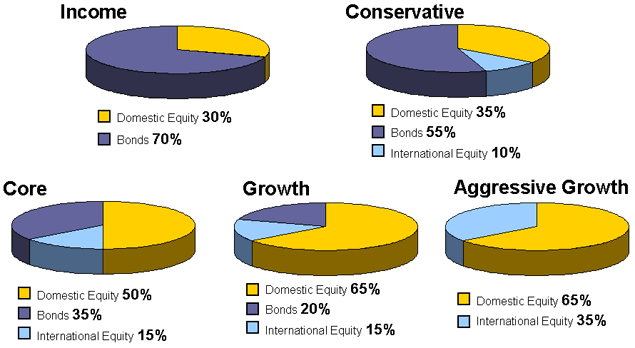Asset Allocation Strategies Your Stock Diversification and Asset Allocation Guide
Post on: 2 Май, 2015 No Comment

Sign up for your FREE report today!
What are Asset Allocation Strategies?
Is it Stock Diversification?
Its another word for diversification, but diversification on many different levelsnot just stock diversification. It starts with number diversificationi.e. not putting all of your eggs in one basket. No matter what the investment, something can go wrong. If you put all of your money in a single investment and it goes bad, you could lose everything. Large losses must be avoided at all costs because they can irreparably devastate your wealth. Consequently, rather than put your money in a single stock, put it in 20 different stocks. Then, if a stock goes under, it will have much less of an impact on your overall wealth.
A second step in asset allocation is to diversify the types of investments you own, not just the number. This entails investing not only in different industries, but different geographies, company sizes, styles (e.g. growth vs. value), political statuses (e.g. public vs. private), capital structures (e.g. equity vs. debt), assets (e.g. stock vs. bond vs. cash vs. commodities vs. private equity vs. hedge funds), and even time (e.g. your youth vs. your old age).
First Step of Asset Allocation Strategies: Isolate Your Retirement Money
Asset allocation advice is meant for your retirement money. Money that you will need two years from now for your kids college education or to buy your dream home should not be included. In fact, any money that you will need to spend within the next five to ten years should be excluded from your retirement portfolio. Short-term liquidity needs should be financed out of cash, CDs, or high-quality bonds that you plan to hold until maturity. Otherwise, normal market volatility may cause your savings to be less than you need when its time to cash out and spend the money.
Importance of Asset Allocation Strategies
and Stock Diversification
A 2006 study found that more than 100% of investment returns come from asset allocation; active management on average actually loses money.
Of course, if you knew in advance which asset class would perform the best, there would be no need for asset allocation; you would simply put all your money in the asset class primed to perform best. But in real life, nobody knows the best-performing asset class in advance. The ability to market time successfully over a long period of time is impossible.
Why is it beneficial to always be invested in something that is doing well? After all, one could argue that it is OK to take your lumps in one time period as long as you can make up the losses with huge gains in another period. This line of argument fails to understand the asymmetry between gains and losseslosses are much more damaging than gains are beneficial in terms of building wealth .
A portfolio with a constant annual return of 3% can actually create more wealth over time than a portfolio with an average annual return of 6.25% if the 6.25% portfolio included some years with large losses. Consequently, ensuring that your portfolio possesses an asset class that performs well in every economic scenario makes sense because this assets gains will neutralize the losses of other investments, thereby smoothing out investment returns and preventing the big loss.
Low Correlations are the Holy Grail of Stock Diversification and Asset Allocation Strategies
The key to finding asset classes that complement each other with zig-zag returns is to know how their returns correlate with each other. Correlation ranges from +1 (moving in lockstep with each other) to -1 (moving in diametrically opposite directions). Mixing assets with a +1 correlation together provides no diversification benefits, whereas adding assets with a -1 correlation together provide perfect diversification. Its pretty rare to find assets with a negative correlation (in some studies, commodities and stocks have negative correlation), so the best you can reasonably hope for is a low positive correlation under 0.5.
Asset Allocation Guidelines for Investment Success
In this new special report, Asset Allocation Strategies: Your Stock Diversification and Asset Allocation Guide . we present you with four asset allocation guidelines for investment success that will steer you clear of making any really big mistakes. In addition, we provide actual, concrete model portfolios . both for young investors focused on growing wealth for retirement and for retirees focused on keeping their nest egg a sustainable source of annual income for the rest of their lives.
Heres a sneak peak at what youll find in this FREE special report:
Asset Allocation Guideline #1:
High Stock Allocation When Young, With Gradual Increase in Fixed Income














